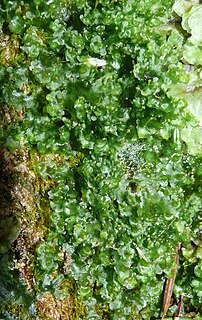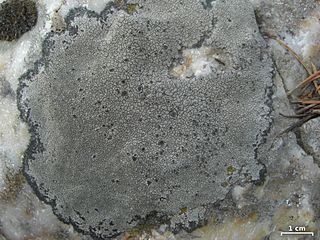
Dioscoreaceae is a family of monocotyledonous flowering plants, with about 715 known species in nine genera. The best-known member of the family is the yam.

Carl Adolph Agardh was a Swedish botanist specializing in algae, who was eventually appointed bishop of Karlstad.

Jacob Georg Agardh was a Swedish botanist, phycologist, and taxonomist.

Oscillatoria is a genus of filamentous cyanobacterium which is often found in freshwater environments, such as hot springs, and appears blue-green. Its name refers to the oscillating motion of its filaments as they slide against each other to position the colony facing a light source. Oscillatoria reproduces by fragmentation, facilitated by dead cells which separate a filament into separate sections, or hormogonia, which then grow. Oscillatoria uses photosynthesis to survive and reproduce. Each filament of oscillatoria consists of trichome which is made up of rows of cells. The tip of the trichome oscillates like a pendulum. in reproduction, it takes place by vegetative means only. Usually the filament breaks into a number of fragments called hormogonia. Each hormogonium consist of one or more cells and grow into a filament by cell division in one direction.

Blasia pusilla is the only species in the liverwort genus Blasia. It is distinguished from Cavicularia by the presence of a collar around the base of the sporophyte capsule, and a scattered arrangement of sperm-producing antheridia. Rhizoids and gemmae of Blasia may be parasitized by the mushroom Blasiphalia.

Bornetella is a genus of green algae in the family Dasycladaceae.

Valonia is a genus of green algae in the Valoniaceae family. The genus Ventricaria is now regarded as a synonym of Valonia.
Ludwig Benjamin (1825–48) was a German botanist who contributed to Carl Friedrich Philipp von Martius' Flora Brasiliensis. The genus Benjaminia is named in his honour.

Bellemerea is a genus of lichenized fungi in the family Lecideaceae. The genus was described in 1984 with B. alpina as the type species.
Arthur Francis George Kerr (1877–1942) was an Irish medical doctor. He is known particularly now for his botanical work, which was important for the study of the flora of Thailand.

Petiveriaceae is a family of flowering plants formerly included as subfamily Rivinoideae in Phytolaccaceae. The family comprises nine genera, with about 20 known species.
Aenhenrya is a monotypic genus of terrestrial orchids that spread by means of underground rhizomes. Only one species is known, Aenhenrya rotundifolia, a very rare plant and endemic to southern India.

Histiopteris is a genus of ferns in the family Dennstaedtiaceae described as a genus in 1875.

Allioideae is a subfamily of monocot flowering plants in the family Amaryllidaceae, order Asparagales. It was formerly treated as a separate family, Alliaceae. The subfamily name is derived from the generic name of the type genus, Allium. It is composed of about 18 genera.
Benjaminiella is a genus of fungi belonging to the family Mucoraceae.
Benjaminia is a monotypic genus of flowering plants belonging to the family Plantaginaceae. It only contains one known species, 'Benjaminia reflexa'(Benth.) D'Arcy.











